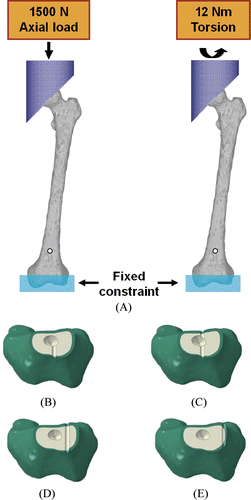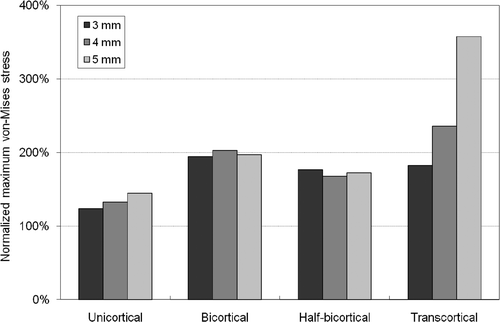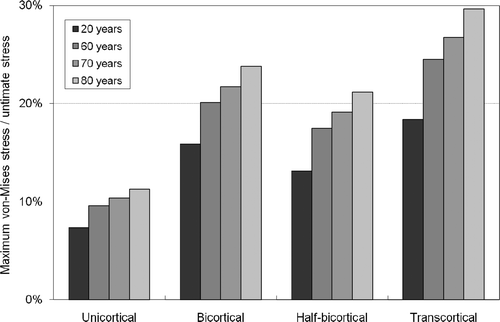Figures & data
Figure 1. Finite element model of a femur with loading and boundary conditions (A) and four different modes of pin penetration in tubular bone: unicortical (B), bicortical (C), half-bicortical, (D) and transcortical (E).

Figure 2. The von Mises stresses under 12 Nm of torsional load at the femoral head for transcortical pin penetration with pin diameter of 4 mm.

Figure 3. Maximum von Mises stresses at the pin hole normalized to the maximum von Mises stresses in the intact model for different pin penetration modes and pin diameters for 1500 N of axial compressive load at the femoral head.

Figure 4. Maximum von Mises stresses at the pin hole normalized to the maximum von Mises stresses in the intact model for different pin penetration modes and pin diameters for 12 Nm of torsional load at the femoral head.


